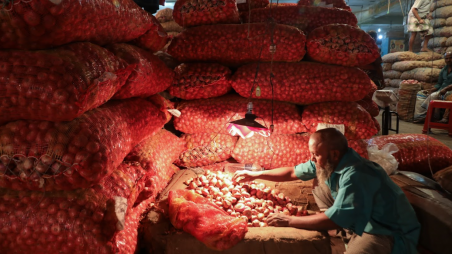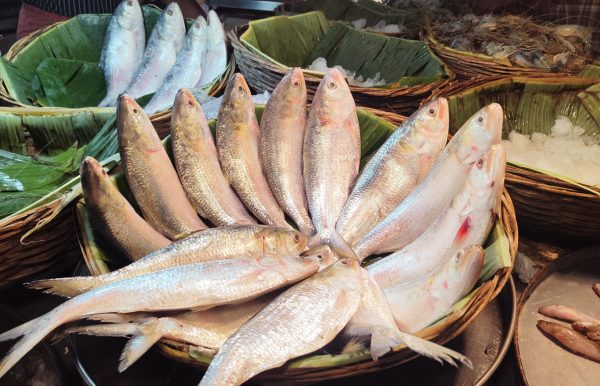Tariff Commission recommends withdrawal of duty on imported onions
- Update Time : Thursday, October 31, 2024

TDS Desk:
The Bangladesh Trade and Tariff Commission has asked the National Revenue Board (NBR) to remove the 5% customs duty on imported onions to reduce the price of the essential commodity in the local market.
The commission sent a recommendation letter to the revenue board in this regard, according to sources at the Ministry of Commerce.
Currently, local onions are being sold at a price range of Tk140-150 per kg at the retail level, while imported ones are priced between Tk120-130.
According to the Trading Corporation of Bangladesh data, the prices of local onions have increased by 30.23% in a month. Imported onion prices have increased by 7.89% during the period.
“India has imposed a 20% duty on onion export due to low production this year caused by heavy rainfall, which has led to an increase in Indian onion prices in the Bangladeshi markets,” the Tariff Commission stated in its letter.
The commission also said onion imports increased in October compared to the previous month.
However, the shortage of the commodity persists in the local market.
“In order to control prices by increasing supply, it is advisable to withdraw the 5% tariff altogether at this point. By reducing cost, import [onion] will be encouraged,” it said.
WHAT THE IMPORT DATA SHOWS
Citing import data, the commission wrote that in September, Bangladesh imported a total of 43,937 tonnes of onions, with an average price of $466.14 per tonne.
Compared to this, onion imports almost doubled to 80,973 tonnes, at a price of $428 per tonne, in October.
In total, LCs have been opened to import over 1.40 lakh tonnes of onion in the said two months.
Apart from the rise in import cost to buy onions from India, the vegetable’s price has increased in the international market by 116.49% in one year. However, in the last month, the price has reduced by 6.38%. But now the price is now increasing again with up to a 3% increase recorded in the last week.
Commerce ministry data shows that Bangladesh has a demand of 26-27 lakh tonnes of onions per annum. Of this, 75-80% is met by local onions and the rest needs to be imported. Most of the import is made from India.
















